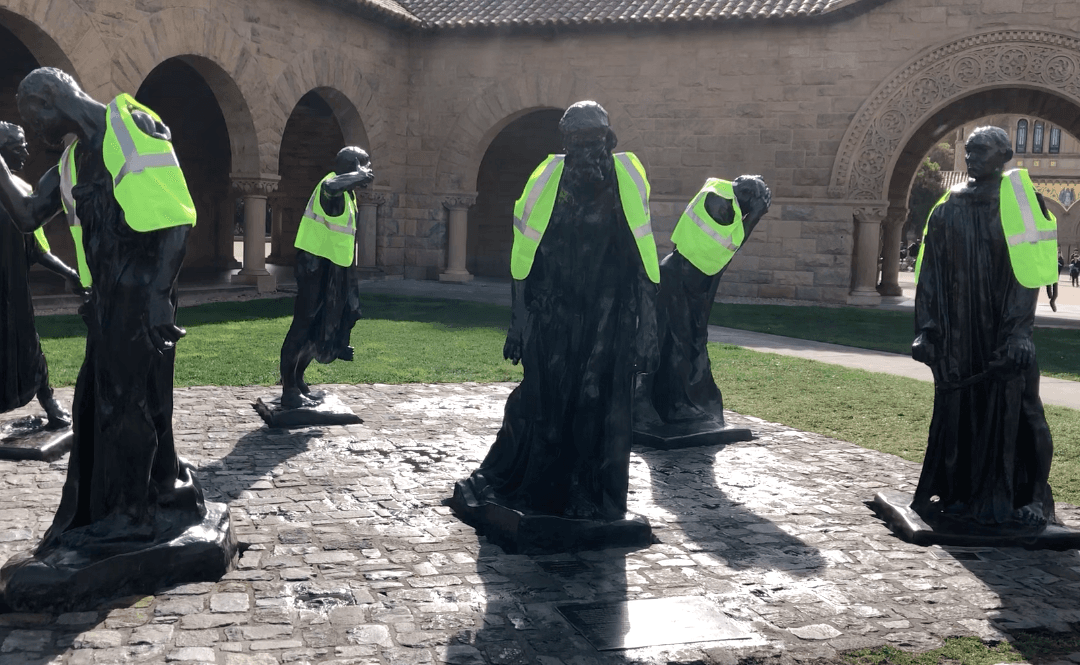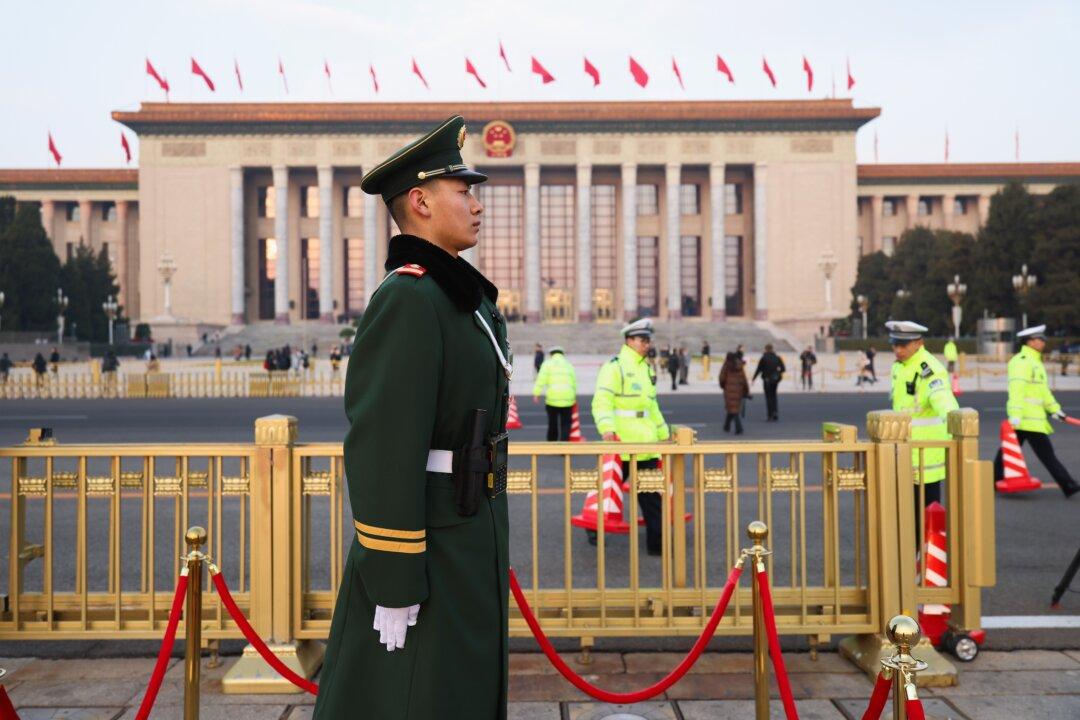PALO ALTO, Calif.—On the morning of Jan. 7, a mysterious protest took place on the campus of Stanford University, perhaps connected to the inauguration of California’s new governor, Gavin Newsom.
Six famous sculptures by Auguste Rodin in Stanford University’s Memorial Court were adorned in yellow vests, at the same time that Newsom was making his inauguration speech in the state capitol. The statues are symbols of civic virtue.





